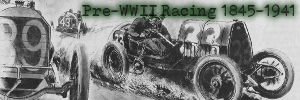















HOW BIG AUTO RACE IS RUN |
|---|
 Topics: Indianapolis 500, Ray Harroun
Topics: Indianapolis 500, Ray Harroun
|
Crittenden Mariott
Omaha Daily Bee
June 4, 1911
Crittenden Mariott Describes Speed Contest at Indianapolis.
EXCITEMENT AT A HIGH PITCH
After the Race is Won by Harroun He Climbs Slowly from His Machine and Remarks that He is Hungry.
(By Crittenden Marriatt of the Hudson Motor Car Company.)
The fifteen-minute bomb explodes high in the air. Five minutes later comes another, followed by minute bombs. As the last is fired the pacemaking car at the left of the line surges forward. Round the ellipse it leads the serried ranks of giants. As it comes back down the stretch it quickens its speed and draws aside. The flag drops and with a roar of throbbing engines and of whirling wheels the ranks dissolve, stringing out almost in an instant into a twisted mile of leaping, panting, exploding monsters, smoke-breathing, flame-enveloped!
The nearly seven hours of the race have begun. The workers at the great score boards bulletin the numbers of those who lead at each ten miles of the course. The assistants keep very bad tally on the laps that each car makes. Later, tires begin to burst and one car after another limps to its pit and spends there some of the precious minutes that mean miles. Hundreds of amateur mathematicians do sums upon their cuffs and find that the pace is seventy to seventy-five miles an hour, a speed that the survivors maintain till the end.
After a while the excitement flags, purveyors of sandwiches and soft drinks reap a golden harvest. The sun decides to come out and watch the throbbing monsters. At the end of the first 100 miles Bruce-Brown leads in the Italian Fiat, Mulford follows in the Lozier. Tetzlaff is close behind in another Lozier. Harroun in the Marmon Wasp is as yet with the "also rans." At 150 miles Harroun has come up from the trailers to second place. At 190 miles he takes the lead and holds it to the end. At 200 miles Bruce-Brown is second and Mulford third. At 300 miles Mulford is second and Bruce-Brown third. At 400 miles and 450 miles Harroun, Mulford and Bruce-Brown lead, closely followed by Wishart in the Mercedes, De Palma in the Simplex, Merz in the National, Turner in the Amplex, Cobe in the Jackson, Belcher in the Knox and Hughes in the Mercer.
Nearing the End.
The end is very near now. One by one the leaping cars toss the miles behind them. Out of the ruck three cars press forward. Harroun in the yellow Marmon is more than a lap ahead and is safe unless something goes wrong with his machine but behind him Mulford in the white Lozier and Bruce-Brown in the dark red Fiat are fighting for second place, with raw nerves and desperate energy. Round the curves they go in lightning parabolas, steering a middle course between right of the way and assassination, weaving spiral waves amid the crowding cars in the stretch. The grandstand is on its feet screaming! The bleachers bellow! The bands try to make their brazen thunder sound above the roar of human voices and automobile exhausts. Harroun flashes across the rope. Thirty seconds more the Lozier and the Fiat cross almost abreast—the Lozier just ahead, according to the electric register.
Harroun climbs slowly from his car. "Gee! I'm hungry," he says, forgetting the $15,000 and more that he has won. "Gee! I'm hungry. Give me something to eat."
